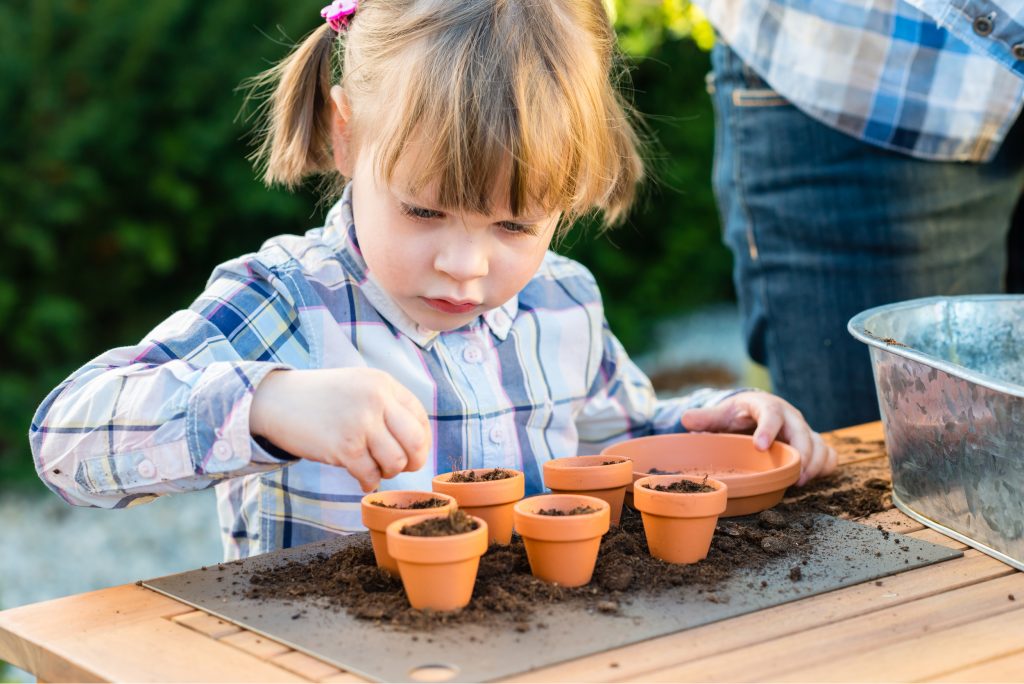In this guide, we’ll explore the rewarding experience of cultivating prickly pear cactus in containers. Our focus will be on two beginner-friendly propagation methods: germinating seeds and rooting pad cuttings. Both techniques offer a gratifying journey into plant care.
It will teach you how to choose the best soil mix for cactus growth, how to find the right balance between sunlight and shade, and how to water these tough, drought-tolerant plants properly. So, put on those gardening gloves, and let’s embark on this green journey.
With their iconic paddles, colorful blooms, and delicious fruit, prickly pear cacti are unique and exciting plants to grow While often started from nursery-grown transplants, growing prickly pear cactus from seeds can be an extremely rewarding endeavor By carefully following some key steps, you can have young prickly pear seedlings sprouting up in no time.
In this comprehensive guide, we will walk through the entire process of planting prickly pear cactus seeds, from selecting and preparing high-quality seeds to creating the ideal germination environment. We’ll share tips to maximize your chances of successful germination and produce thriving cactus seedlings ready for repotting. Whether you’re a cactus pro or new to the spiny scene, let’s explore the wonderful world of planting prickly pear cactus from seeds!
Step 1: Obtain High-Quality Prickly Pear Seeds
The first critical step is sourcing viable, fresh prickly pear cactus seeds There are a few options for obtaining seeds
-
Purchase seeds from a reputable dealer – Many specialty cactus and succulent seed suppliers sell prickly pear seeds of named cultivars. This gives you predictable characteristics.
-
Collect seeds from ripe fruits – If you have access to ripe prickly pear fruits, scoop out the seeds and pulp, rinse, and dry well before storing Fresh local seeds often have great vitality
-
Receive seeds from fellow gardeners – Connecting with other cactus growers can yield exciting seed varieties like rare heirlooms.
No matter the source, inspect seeds and select plump, unshriveled ones without spots or mold. Discard any that are too dry or damaged looking.
Step 2: Prepare Seeds for Planting
Before sowing them, it’s beneficial to prepare prickly pear seeds in a couple key ways:
-
Cleaning – Use a screen to separate out debris and small seeds. Soak in water briefly and discard any floating seeds.
-
Cold stratification – Mimic winter conditions by refrigerating seeds for 4-6 weeks moistened in a bag of damp peat or sand. This cold period helps crack seed dormancy.
-
Soaking – Prior to planting, soak seeds in room temperature clean water for 12-24 hours. This initial hydration helps initiate the germination process.
Taking these simple steps sets your prickly pear seeds up for better germination success before planting.
Step 3: Choose an Appropriate Planting Container
To plant your primed prickly pear cactus seeds, you’ll need an appropriate container. Look for the following features:
-
Drainage holes – This is essential to prevent soggy soil. Add extra holes if needed.
-
Shallow depth – 1-2 inches deep works well. It keeps seeds from being buried too deep.
-
Individual cells – Use a seedling tray with multiple individual cells for easy transplanting.
-
Clear lid – A lid or plastic wrap maintains humidity while allowing light to reach emerging seedlings.
A seed starting tray, propagation tray, or other shallow pot with drainage can all work well for planting cactus seeds.
Step 4: Prepare a Seed-Starting Soil Mix
The ideal seed-starting medium for prickly pear cactus is light, well-draining, and nutrient-poor. Aim for a mix with the following qualities:
-
Lightweight – Incorporate perlite, pumice, or gravel to reduce density.
-
Gritty – Coarse sand or pumice provides excellent drainage.
-
Soilless – Avoid using garden soil, which can be too heavy.
-
Low fertility – Excess nutrients can inhibit germination.
You can make your own mix by combining perlite, coarse sand, peat moss, and vermiculite. Or use a commercial cactus/succulent soil blend. Moisten the soil before planting.
Step 5: Sow Seeds in the Container
Now it’s time to actually sow those primed prickly pear cactus seeds! Follow these tips for success:
-
Plant seeds just below the soil surface. Aim for 1⁄4 inch deep or less.
-
Space seeds about 1 inch apart to avoid crowding.
-
Sow 2-3 seeds per cell to hedge your bets. You can thin later.
-
Label your planted seeds to remember variety.
-
Lightly water in seeds without washing them away.
-
Put container with lid in a warm spot (70-80°F).
With properly prepped seeds sown in the ideal starting mix at the right depth, you’ve given them the best shot at sprouting. Now for the fun part – waiting for baby cacti to emerge!
Step 6: Caring for Germinating Seeds
In the days and weeks after sowing prickly pear cactus seeds, follow these care tips:
-
Maintain warm temperature around 75°F for best germination.
-
Keep the soil moist but not saturated. Mist gently when surface dries.
-
Remove lid once the first seedlings poke through soil.
-
When true leaves develop, provide more direct light.
-
Allow stronger seedlings to remain after thinning unnecessary extras.
-
Transplant individual seedlings to own containers when 1-2 inches tall.
With attentive care and optimal conditions, you’ll be rewarded with tiny prickly pear seedlings ready to grow on and thrive. Enjoy watching your seeds progress from dormant to sprouted to baby cacti!
Step 7: Transplant and Grow On Your Prickly Pear Cactus
Once seedlings become established, it’s time to transplant them into permanent growing containers and homes. Follow these guidelines:
-
Select a container with drainage holes that’s 2-3 times wider than the root ball.
-
Use cactus/succulent soil mix or make gritty, fast-draining blend.
-Plant at same level as in seedling container and water well to settle soil.
-
Gradually introduce to direct sunlight over a week or two to harden growth.
-
Water deeply but infrequently, allowing soil to fully dry between waterings.
-
Fertilize monthly during growing season with diluted cactus fertilizer.
With the right care your homegrown prickly pear cactus will flourish, showing their iconic paddle growth and beautiful flowers in no time. Enjoy the fruits of your planting labor!
Growing prickly pear cactus from seeds may take patience and attentive care, but the reward of nurturing your own baby cacti from seed to maturity makes it all worthwhile. Follow this guide and you’ll be on your way to successfully planting prickly pear seeds and beyond. The spiny journey begins now!

Dry the Cutting
Once the cutting is taken off, place it on a flat surface in a room that stays at least 60 °F (16 °C) all the time to dry. This drying time should last between 7 and 10 days so that callus tissue can form over the cut edge. This is important to keep the wood from rotting later on.
See Also: Vegetables to Grow in Winter
Germination and Growth
Germination Time: It can take from a few weeks to over six months for the seeds to germinate. Once they sprout, they grow rather slowly.
Transplanting: You can plant seeds directly outside in early spring, after the risk of frost has passed. When the seedlings are big enough, you can move them to bigger pots or the ground.
How to Grow Prickly Pear Cactus from Seeds Grow cacti from prickly pear yourself from seed I
FAQ
Can I grow prickly pear cactus from seed?
Should you soak cactus seeds before planting?
How long does it take for prickly pear to fruit from seed?
What is the fastest way to germinate cactus seeds?
- A Complete Guide to Caring for Yuki Cherry Blossom Shrub - January 23, 2025
- Identifying Red Hot Poker Seeds: What to Look For When Harvesting Torch Lily Pods - January 23, 2025
- A Complete Guide to Harvesting Evening Primrose Seeds - January 23, 2025
